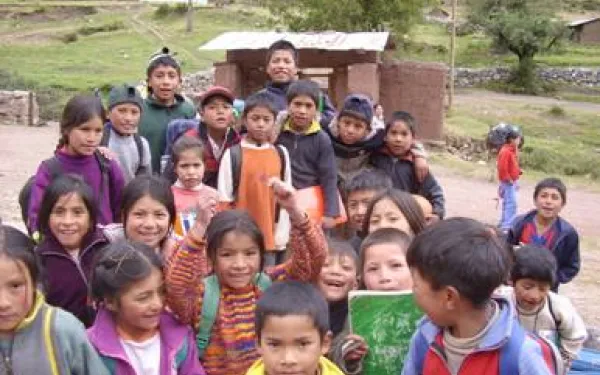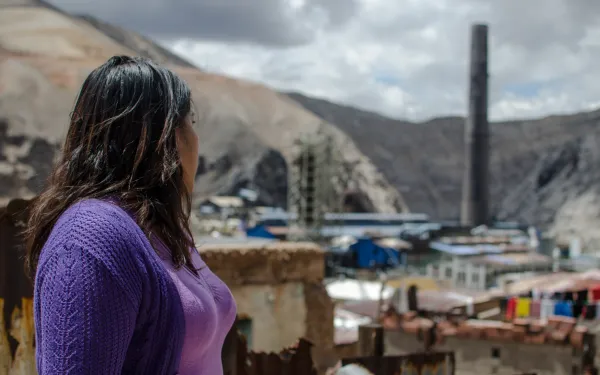Inter-American Commission admits case on human rights violations in La Oroya
FOR IMMEDIATE RELEASE: August 19, 2009 IACHR Will Examine Case Against Peru for Violating the Human Rights of Residents of La Oroya, A City Extensively Contaminated by the Doe Run Peru Smelter ► According to the Inter-American Commission on Human Rights of the Organization of American States, Peru may be violating the rights to life, personal integrity, and to information and access to justice, due to toxic pollution from Doe Run Peru’s multi-metal smelter in La Oroya, Peru. ► The potential extension of an environmental management plan for the complex, announced by Peruvian President Garcia, must include effective measures to guarantee against further human rights violations. WASHINGTON, D.C. – The Inter-American Commission on Human Rights (IACHR) will examine a complaint against Peru for human rights violations in La Oroya, a Peruvian town described as one of the “most contaminated places on earth.” AIDA, Earthjustice and CEDHA submitted this case in 2006 with the local support of the Peruvian Society for Environmental Law (SPDA). In the Inter-American Commission’s recent report accepting the case, it “considers that the alleged deaths and/or health effects of the presumed victims are a consequence of acts and omissions by the State with regard to environmental pollution arising from the multi-metal complex operating in La Oroya, which if proved could constitute a violation of the rights conferred in Articles 4 [life] and 5 [personal integrity] of the American Convention.” “This claim stems from the lack of action by Peru, considering that the government has known about the impacts of the pollution on persons and the environment for at least ten years without acting to resolve the contamination problem,” states AIDA Co-Director, Astrid Puentes. “Even if some steps have been taken in La Oroya, the measures implemented have not been effective in safeguarding health and the environment, as noted by the Peruvian Constitutional Court, the Ministry of Health, and the Commission.” “This is excellent news that brings us hope that things will finally improve in La Oroya” said one of the case’s plaintiffs, whose names are confidential. In 2006 the Constitutional Court of Peru ordered actions to protect public health in the city. The “unjustified delay” in complying with this order may also constitute a violation of the human rights of access to justice and judicial guarantees. The Commission will also investigate whether Peru’s actions violate the right to access to information and freedom of expression. In addition to serious health effects, this case alleges unjustifiable limits to accessing information about the community’s environmental and human health situation and pressure toward those trying to distribute this information. The IACHR’s decision to examine the complaint coincides with negotiations between the Peruvian Government and the Doe Run Peru company, owner of the Multi-Metal Complex, over a potential extension for the complex’s Environmental Management Plan (PAMA). The effective implementation of this plan would improve environmental quality in the area. There is little certainty whether the company will ever meet its obligations for environmental controls under this Plan, as the government has already granted several extensions. The Commission will likely monitor the compliance process and consider the results in any final decision regarding the violations of human rights in Peru. The PAMA does not actually allow for extensions, and the government could fine the company for violating the Plan. If Peru does not impose fines, it would further prolong the unjustified delay of actions necessary to control the pollution in La Oroya and protect the human rights of its inhabitants,” states José Luis Capella, of SPDA. “Any future decision regarding the PAMA must include effective measures to enforce the obligations to improve health and the environment in the city already contained within the Plan.” Connected with this case, the IACHR also requested in 2007 that Peru implement urgent precautionary measures to guarantee the life and safety of La Oroya residents. These measures insist that Peru provide specialized medical evaluations and treatment for those affected by the toxic pollution. “The IACHR’s acceptance of this case is vital to protect human rights in La Oroya. It demonstrates that the severe pollution in the city has an impact, not only on the environment, but on human health, and that it affects their human rights,” stated Martin Wagner Director of the International Program of Earthjustice. “We hope the case has positive impact on the protection of human rights in La Oroya and in the region."
Read more


